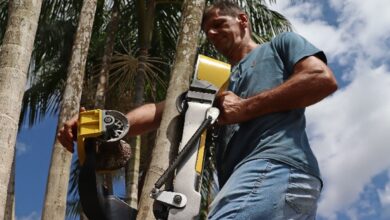What Would Happen If the Amazon Turns Into A Desert?
Thanks to high levels of deforestation it is possible that the Amazon will become a savannah, What would be the environmental, economic and social impacts for the region?

Photo: Pixabay
LatinAmerican Post | Vanesa López Romero
In the last two years , the Amazon has been strongly affected by deforestation, marking historical figures of loss of hectares that were previously tropical forest. For the Scientific Panel for the Amazon, this region is in crisis and is about to reach a point of no return. Their data shows that in the last 36 years 17% of the vegetation has been lost due to deforestation, and that 2020 and 2021 were the years in which the loss figures were highest. Now they draw attention to the need to take measures before 20% and 25% are reached, because here the point of no return would be entered, causing the Amazon to become a savannah little by little. The Panel assures that this could happen in this decade.
Obviously, this would be catastrophic, since it would mean the loss of the largest tropical forest in the world, which would have repercussions at the global. But the Latin American countries that host part of the Amazon would be the main affected, not only environmentally, but also economically and socially.
What would be the consequences?
Let’s start with the obvious. The Amazon represents an important part of the world’s biodiversity and, until very recently, was also considered a key region for carbon regulation. However, due to the rampant deforestation that has presented in recent years, at this time the Amazon emits more CO2 than it can absorb and is close to reaching a point of no return.
In that order of ideas, the environmental consequences would be that there would be an ecological collapse that would imply that the global climate crisis worsens, since the region would be producing more heat instead of doing what it originally did: maintain global temperature at stable levels.
The closer we get to the Amazon becoming a savannah due to indiscriminate logging and the lack of regulations to truly protect this territory, the countries that host it will be the vulnerable to environmental emergencies and natural disasters. The Panel assures that in a few years we could see an imbalance in the water, energy and carbon balances of the Amazon basin.
Also read: Opinion: What you What you do counts to curb climate change
One of the most worrying consequences is that the transport of moisture to the Andes would be affected, which means that the water supply of several Latin American cities would be at risk.
This leads us to glimpse the social and economic consequences. First of all, deforestation affects not only the vegetation and wildlife of the Amazon, but also its inhabiting communities. The industries that are active in the region (including livestock, the strongest and most devastating) have for decades displaced indigenous communities that settled their culture in this territory. As a consequence, they have had to migrate and live under precarious circumstances. In addition, those who defend the environment and the Amazon live under constant threat for wanting to protect a place on which all of Latin America depends.
In terms of the economy, we just have to take into account that the natural disasters and the lack of supplies that we will see due to the environmental consequences, will have an almost immediate repercussion at the economic level. Especially at an economic level, since the raw materials that several of the countries in the region use as a source of economic activity would be affected. 55% of Latin America’s GDP depends on services related to nature . Environmental catastrophes and imbalance could cost the region millions, since more than half of its economy would be at stake. In addition, the infrastructure would be directly affected by the threat of forest fires, droughts, flash floods, among others. Nature Sustainability estimates that, in Brazil alone, there could be annual losses of 422 million dollars for the agricultural industry due to droughts derived from the damage to the Amazon.
And today we are seeing the consequences. For example, the coffee industry, one of the strongest and that generates the most income per year, is already feeling climate change very closely, since due to it, 60% of the coffee variety in the region has been affected, reaching the point of being in danger of extinction.
Even the pharmaceutical industry and the medical sector would be among the first to be affected. It is enough to see that 25% of the medicines used are derived from plants that grow in the tropical forest. Plants, which are now at risk of being lost due to the loss of Amazonian biodiversity.
We are at a critical moment in which the governments of the countries of the region must set their sights on protecting the Amazon in order to protect the economy of Latin America in the short, medium and long term, without forgetting that the main engine must be social justice and environmental.





